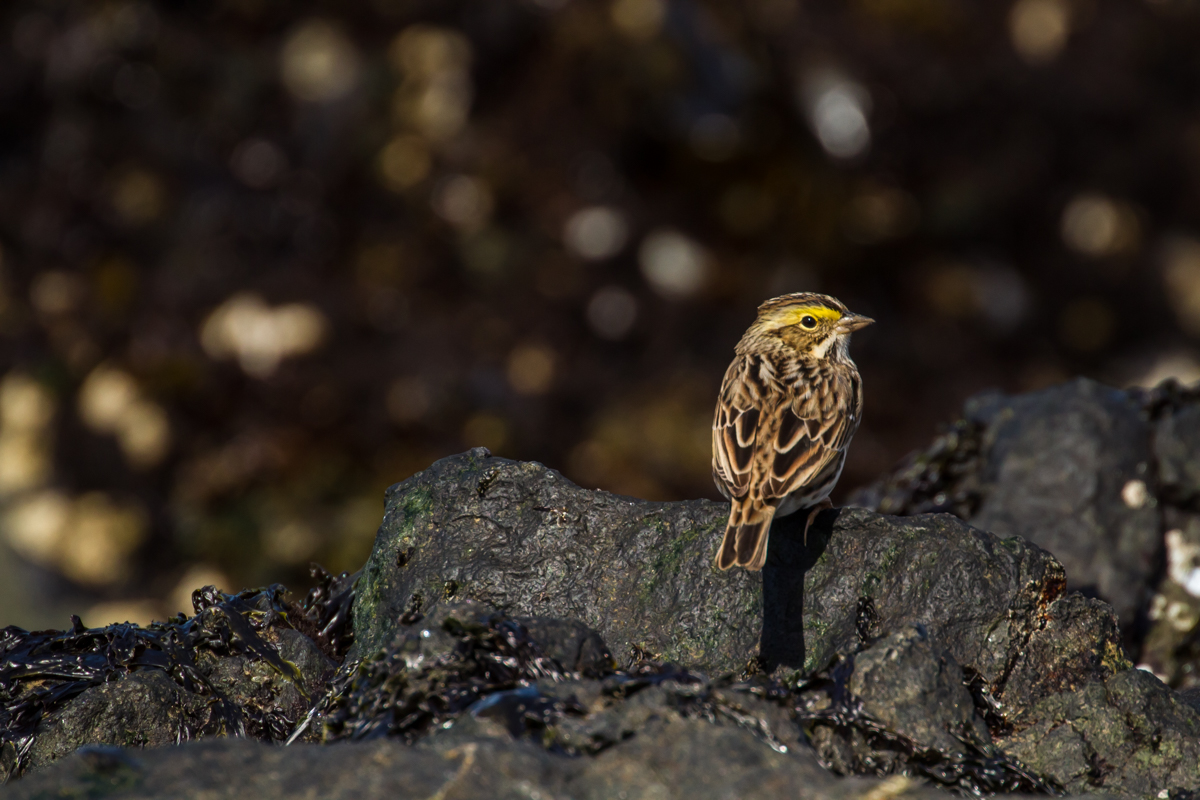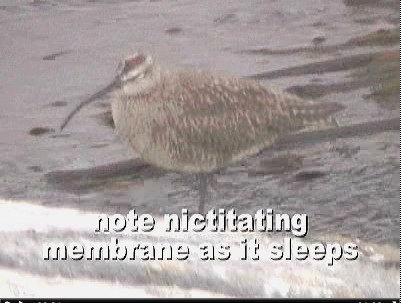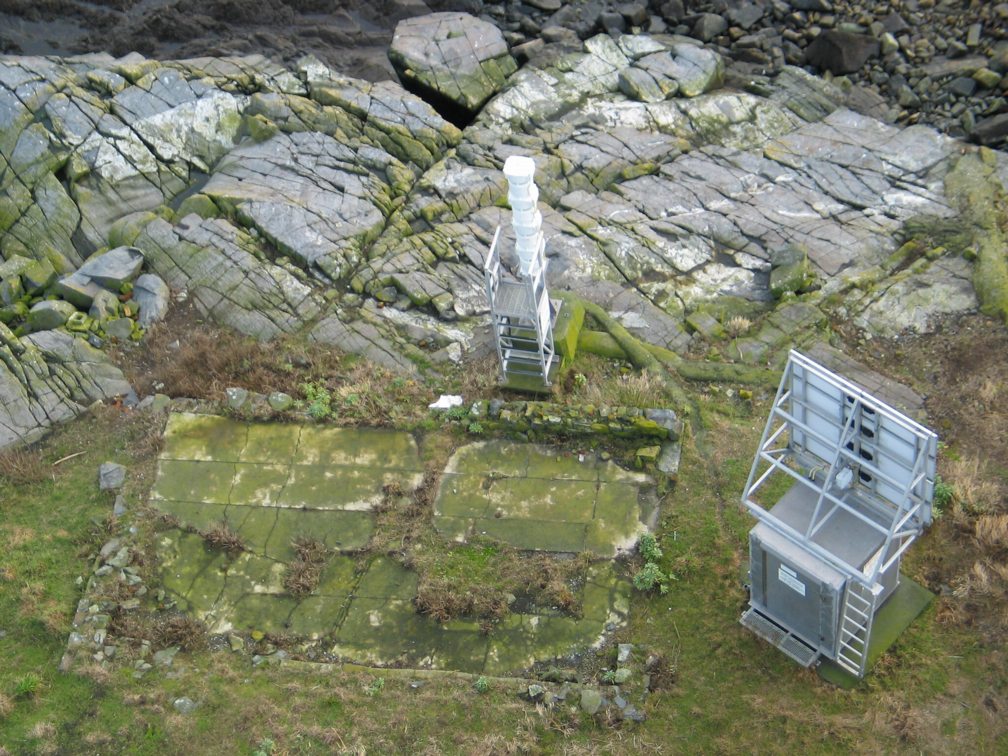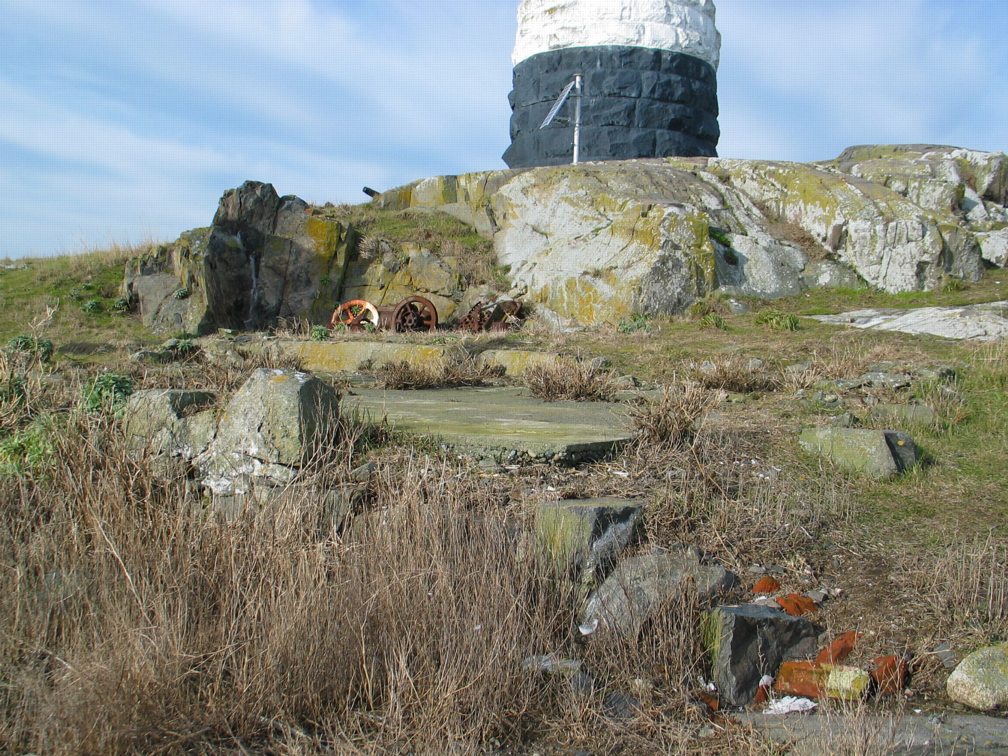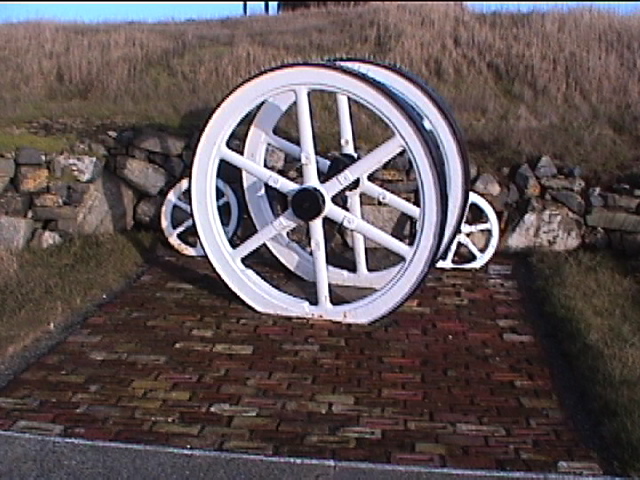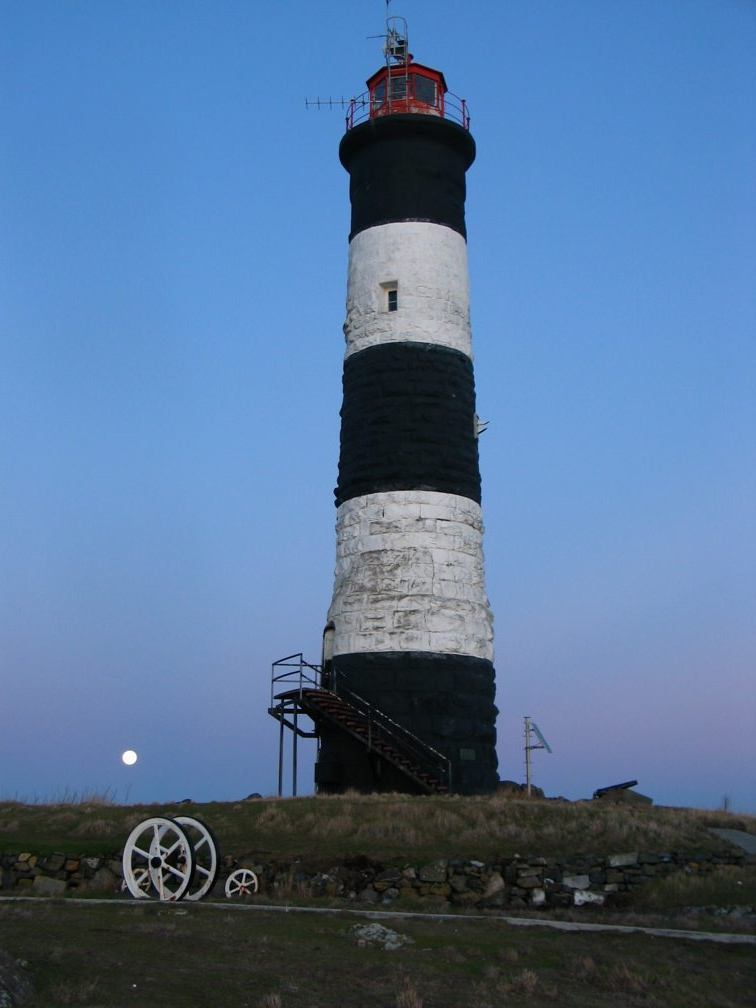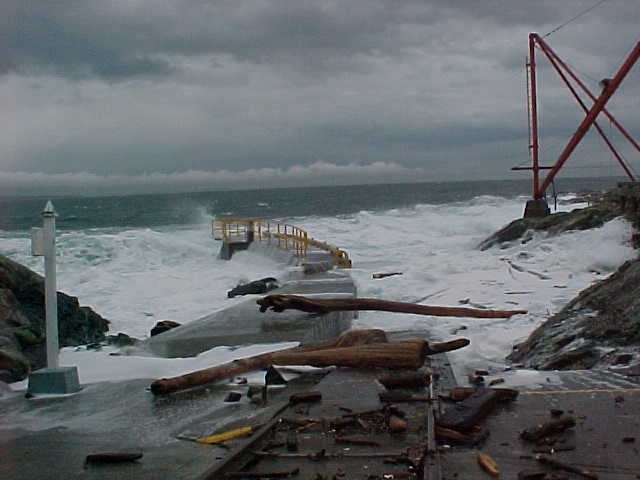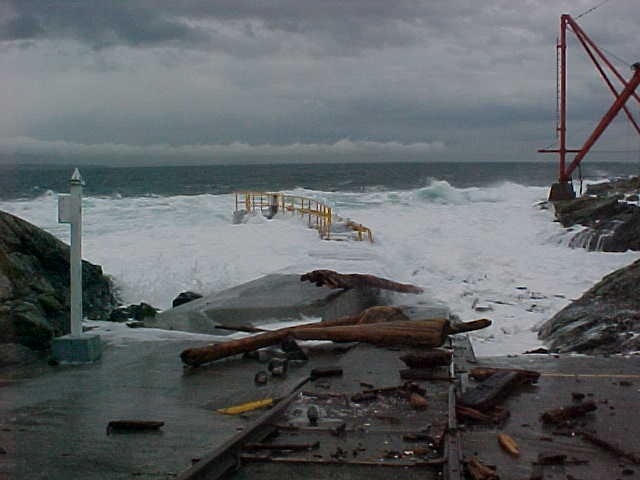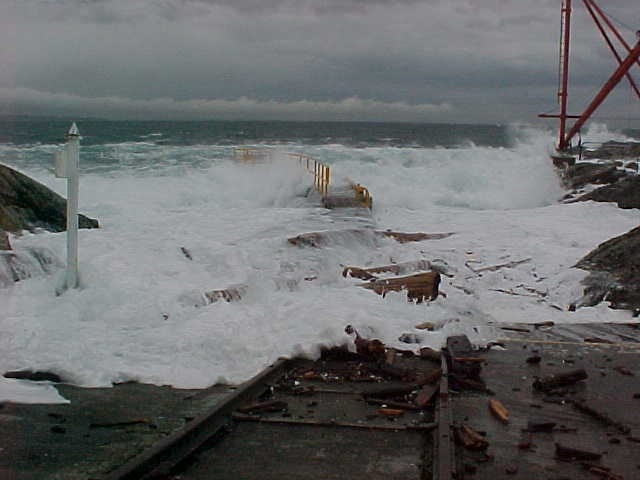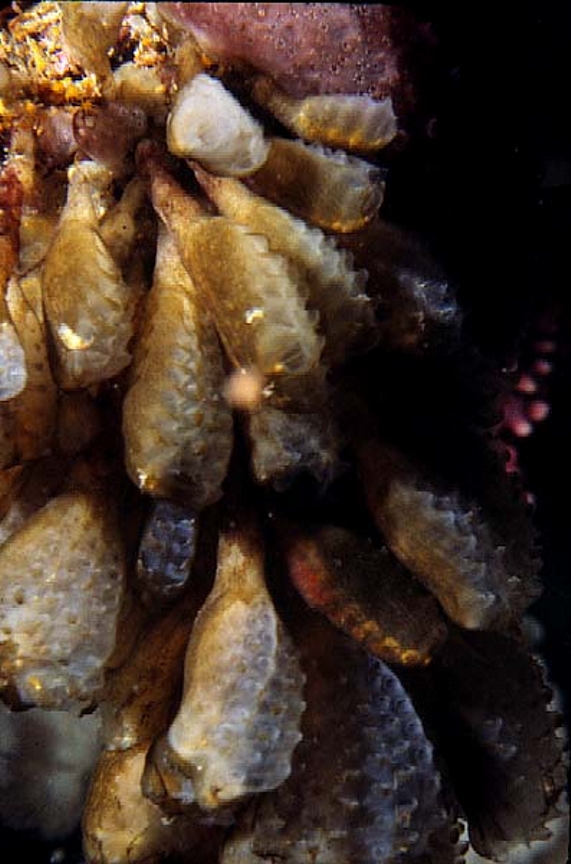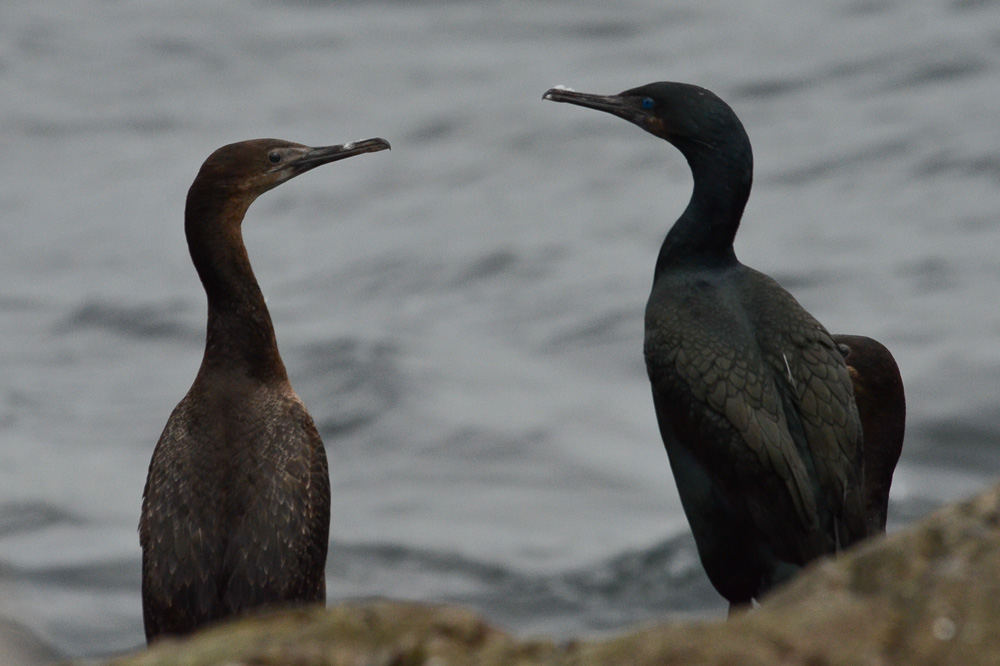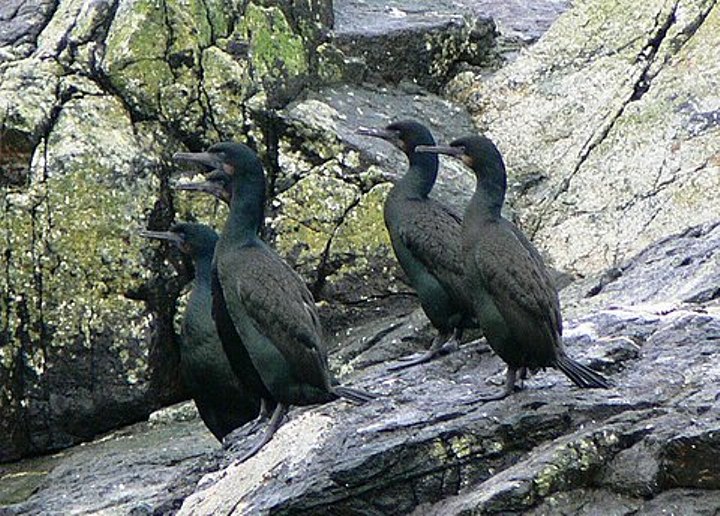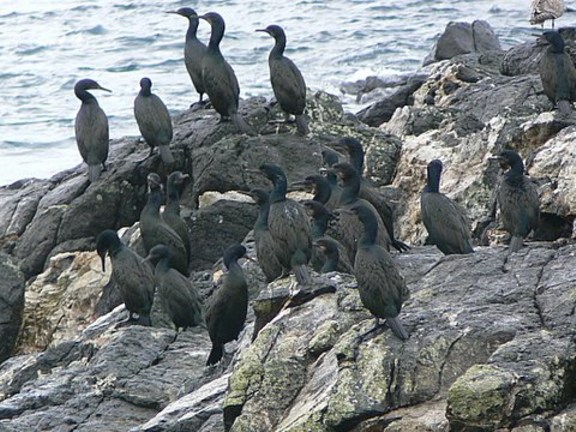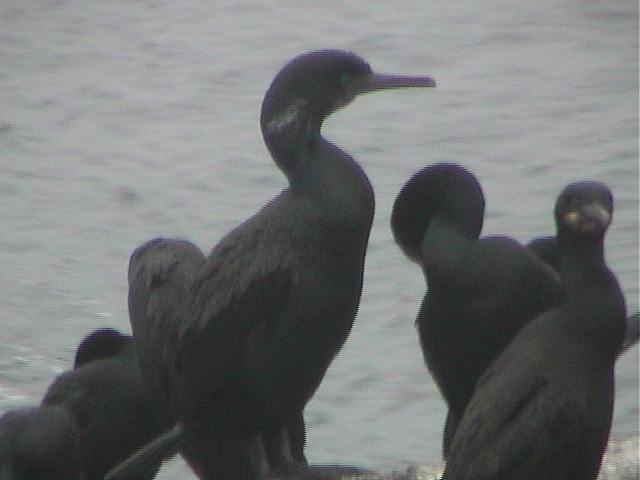In July 2008, I took this video clip of our resident elephant seal “Slash” asleep in one of his favourite spots behind the boathouse at Race Rocks. At 8:00 am he was in a deep sleep, interrupted only by the kelp flies on his face and a few itchy spots on his body. What was remarkable was the recurring pattern of breath holding. I made this video as a study of this aspect of what appears to be intentional sleep apnea. Since the filming was uninterrupted, one can time the various phases of a breathing cycle. Labels on the video point out the beginning and end of one such breath-holding cycle. I observed that he repeated a similar pattern for at least 15 minutes, the length of time I as was able to observe. Listen for the sounds and watch for the flaring nostrils.You can see more elephant seal images and videos in the Elephant Seal Taxonomy.
Category Archives: Video
Black Oystercatchers hatch today
On June 22, 2008, the Black Oystercatcher nest which was located on the rock just above the docks produced two chicks. They hatched in the morning and this set of clips was taken from a screen capture of camera 3 in intervals between 4:00 PM to 5:30 PM. They returned to spend the night at the nest, and left the next morning.
Video of Black Oystercatchers nesting today June 22,2008: by Garry Fletcher[/caption]
Underwater Materials Performance Testing
See other archived video with Pearson College Divers
| Procedure 1 | Dec 7, 2007– Purpose: To test performance and resistance to fouling of PVC junction boxes and sealant compounds |
| Procedure 2 | Jan 10, 2008– Purpose: to test resistance to fouling and corrosion of different alloys of Stainless Steel as well as various types of fasteners. |
| Procedure 3 | Purpose: to protect submarine cables from chafing on sharp rocky edges |
| Procedure 4 | Purpose: To prevent corrosion of steel Ibeam supporting and holding power and control cables through intertidal zone. |
| Procedure 5 | Purpose: To provide ballast to steel Ibeam carrying power cables in intertidal zone preventing movement during heavy surge. |
Passerculus sandwichensis: Savannah Sparrow–The Race Rocks Taxonomy
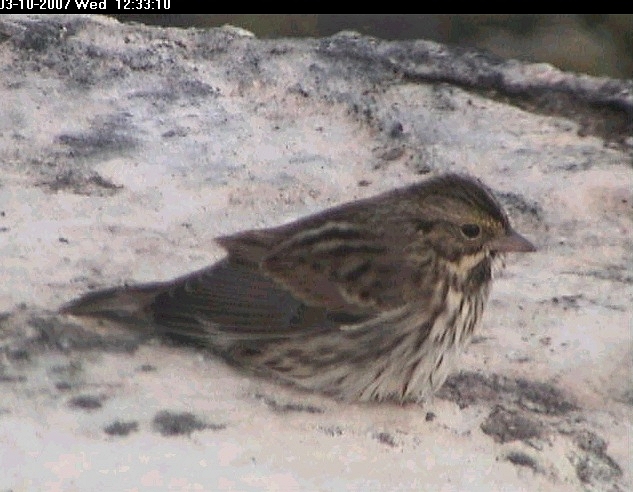
A Savannah sparrow shows up well against the guano-covered rock.These photos in the slide show were taken by PB Sept 3, 2007
Pam Birley took a series of photos which I have made into a slide show here
Domain Eukarya
Kingdom Animalia
Phylum Chordata
Sub-Phylum Vertebrata
Class Aves
Order Passerifomes
Family Passeridae
Genus Passerculus
Species sandwichensis
Common Name: Savannah Sparrow
Savannah sparrows often show up in the Christmas Bird Count
| Other Members of the Class Aves at Race Rocks |
and Image File |
 The Race Rocks taxonomy is a collaborative venture originally started with the Biology and Environmental Systems students of Lester Pearson College UWC. It now also has contributions added by Faculty, Staff, Volunteers and Observers on the remote control webcams. The Race Rocks taxonomy is a collaborative venture originally started with the Biology and Environmental Systems students of Lester Pearson College UWC. It now also has contributions added by Faculty, Staff, Volunteers and Observers on the remote control webcams.
Garry Fletcher |
Whimbrel observed migrating through
Pam Birley from the UK submitted these images of a whimbrel from remote camera5
http://www.racerocks.com/racerock/eco/taxalab/2006/numeniusp/numeniusp.htm
Original Engine Room at Race Rocks – (1860s)
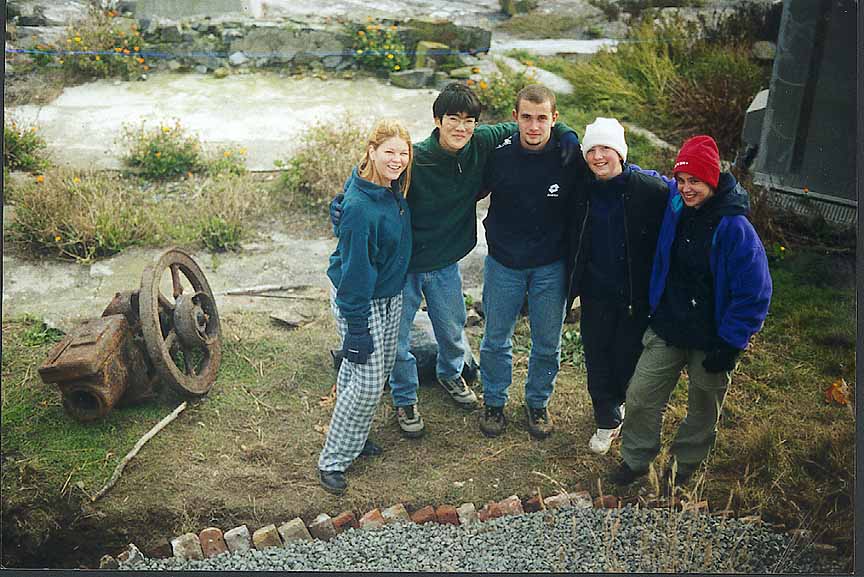 |
 |
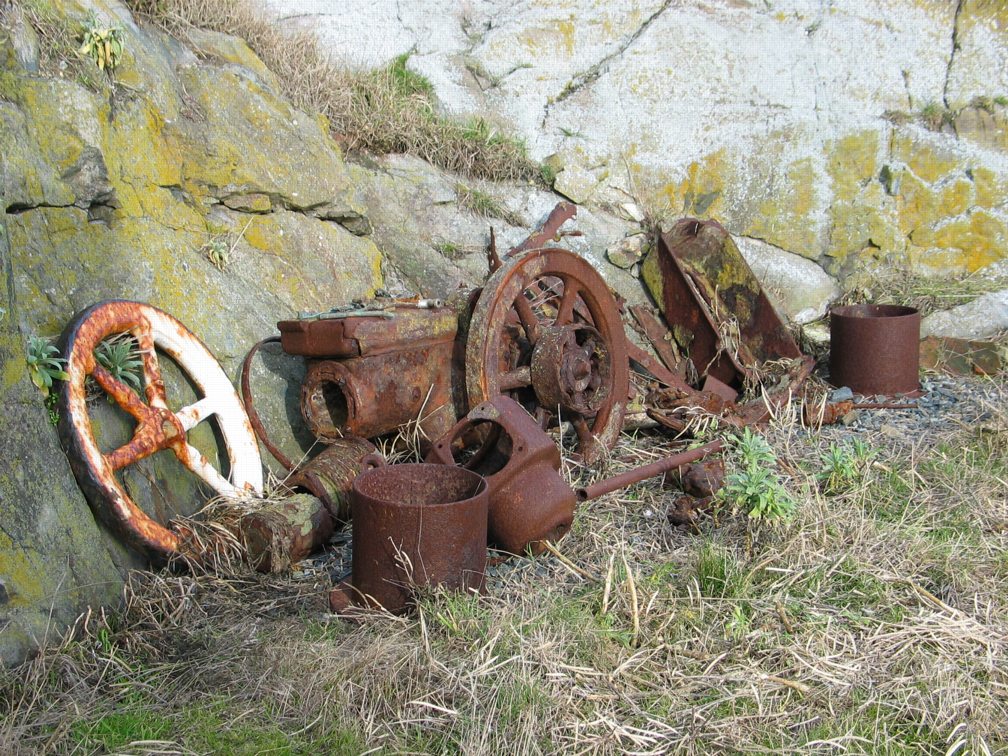 |
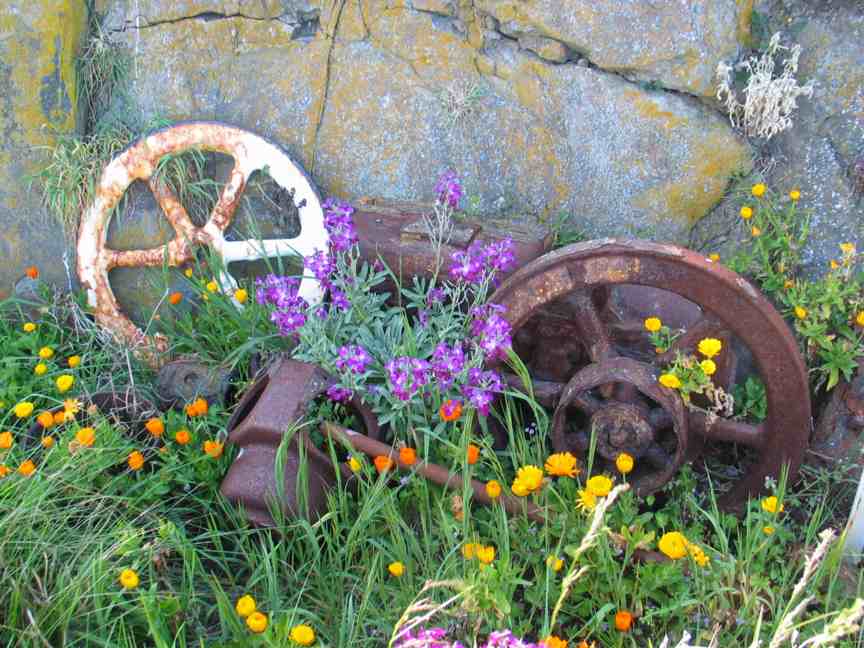 |
| Against the rock wall above the original concrete foundation of the old engine room, and below the tower, a group led by Hannah and Giovanni on one Project week did the digging out of soil, and replacement with crushed rock. . | This allowed the creation of a natural looking corner for the old historic engine room equipment. In this photo Hannah is on the bucket brigade carrying gravel. |
Some of the artifacts that had accumulated by 2005. | In 2006, the area had taken on a life of its own |
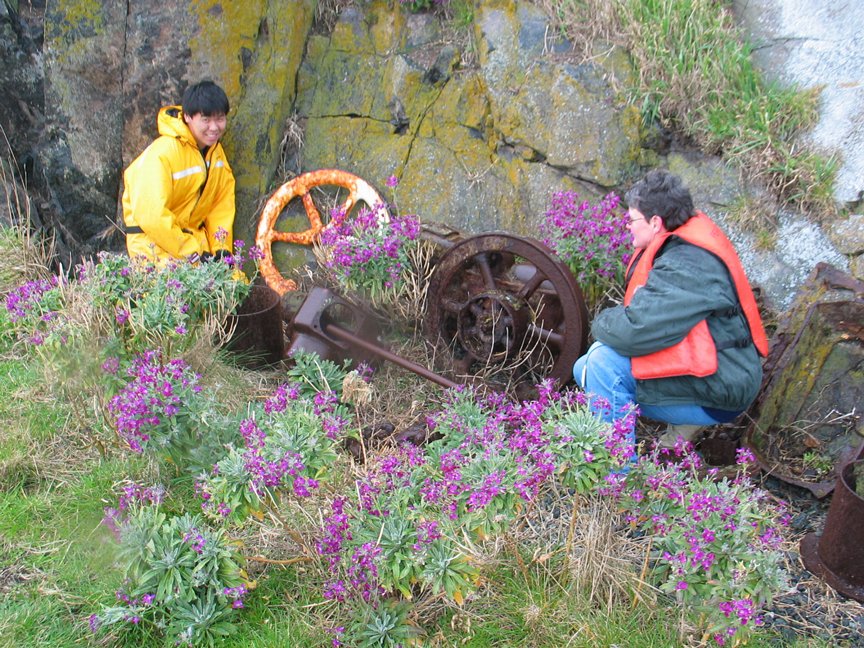 /td> /td> |
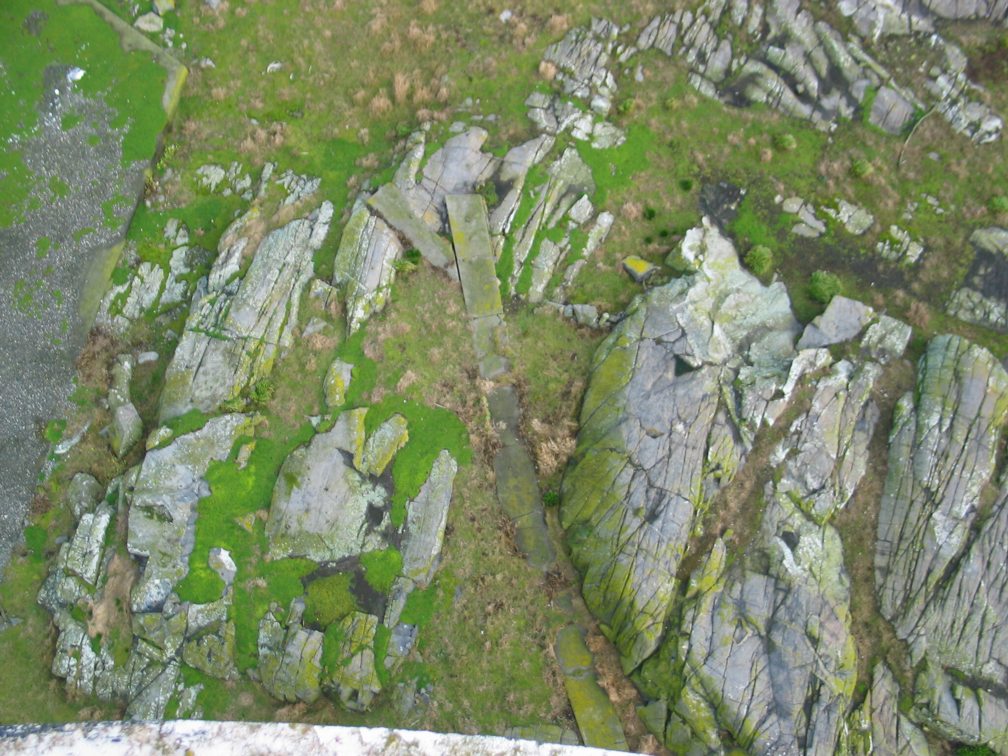 |
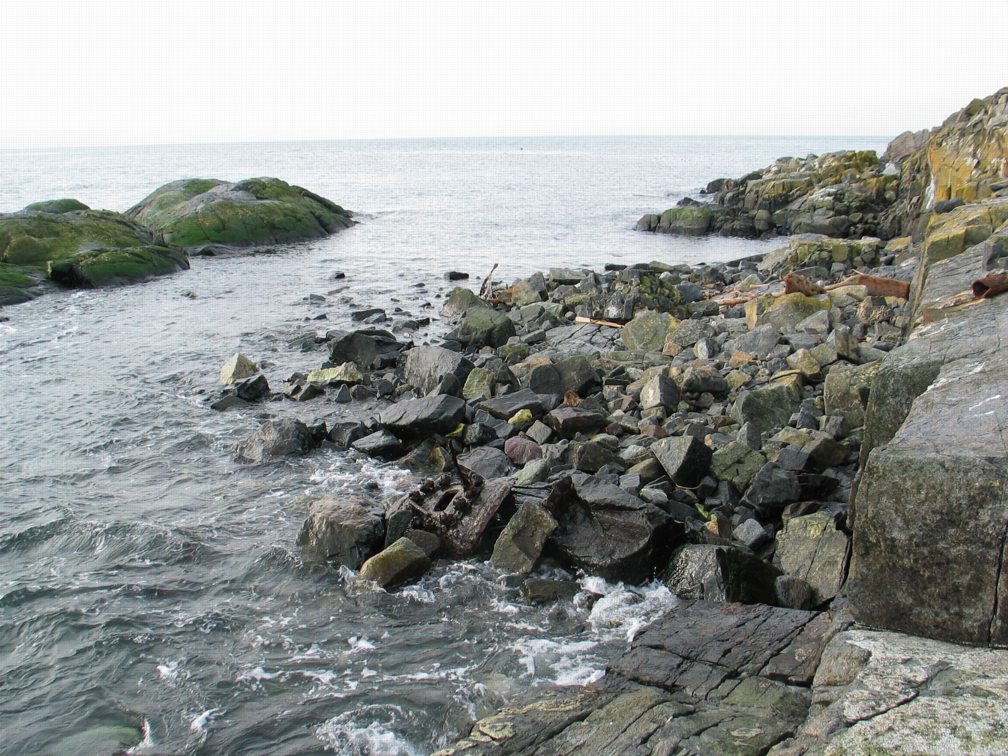 |
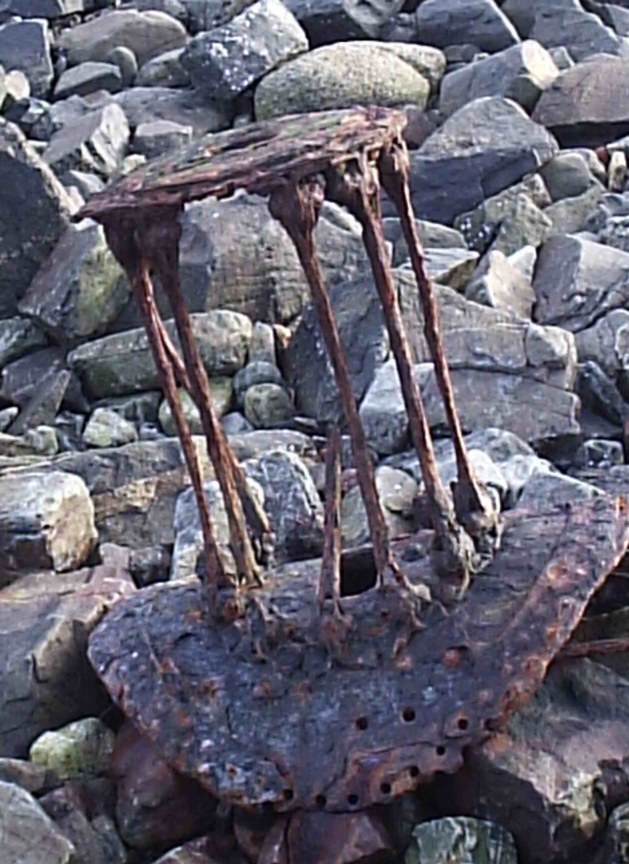 |
| Sylvia and Alex Chan examine the old engine parts. | Looking straight down from the tower on the east side, one can see the concrete pathway which we believe went to the blacksmith shop. | In the past, many old pieces of equipment were simply pushed over the side. | In 2006,the old boiler which lay rusting in the intertidal zone for many years was starting to break up. |
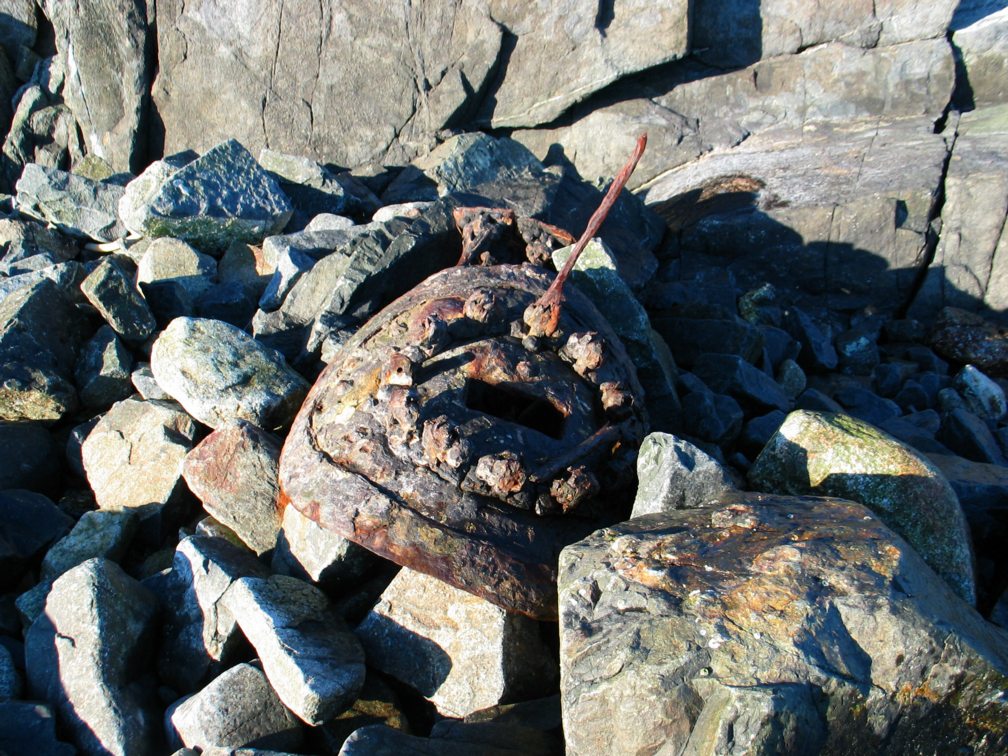 |
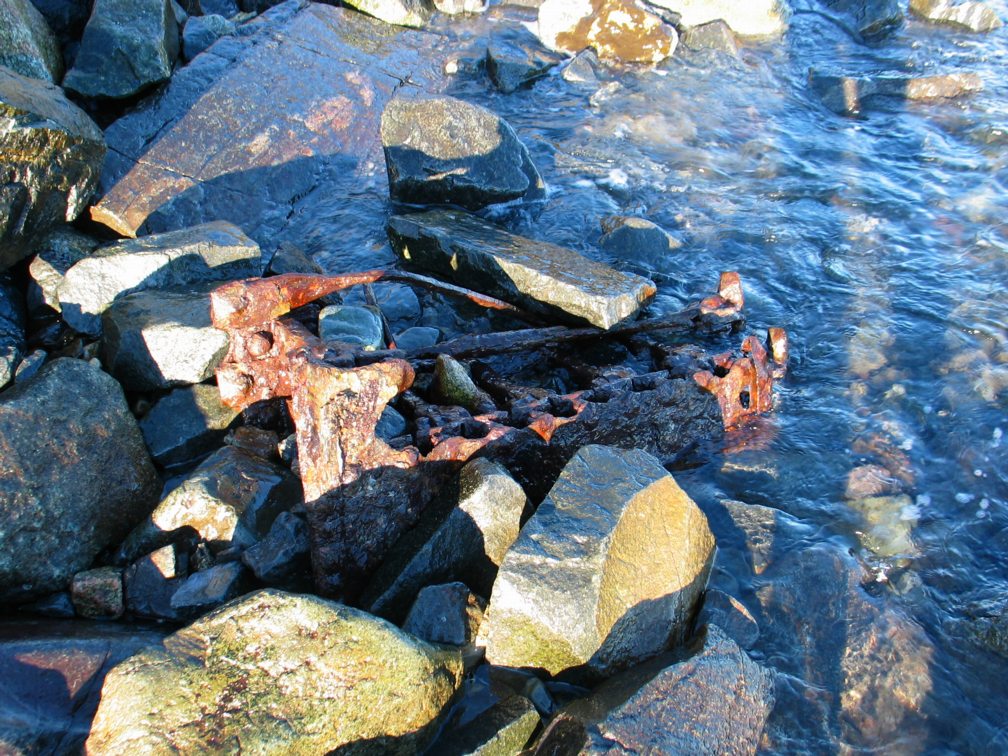 |
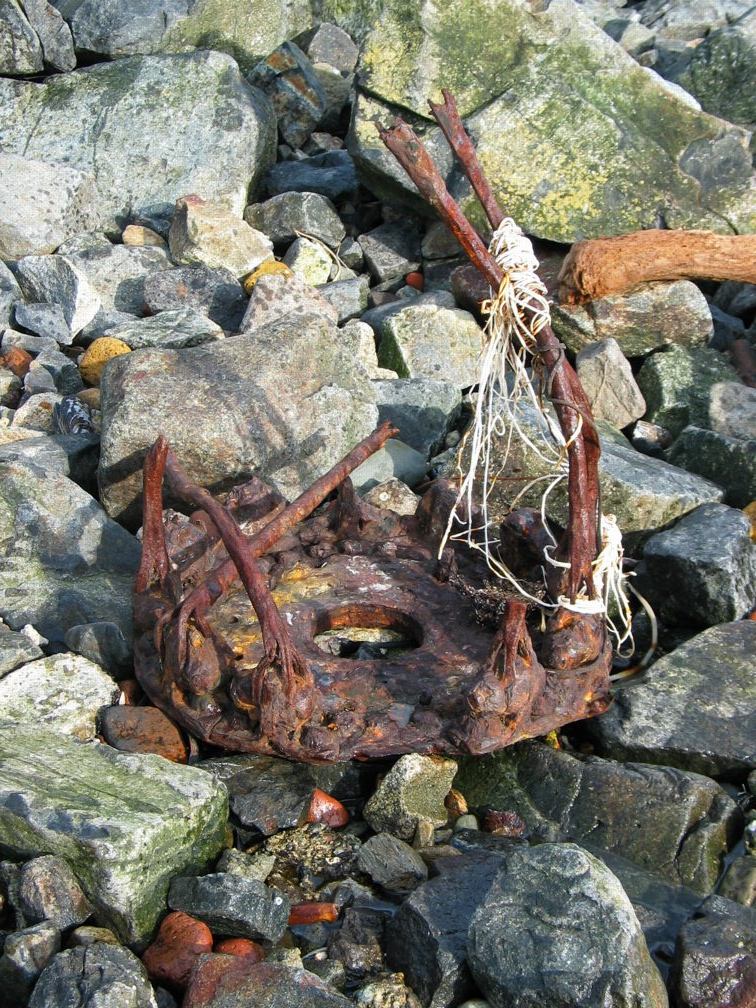 |
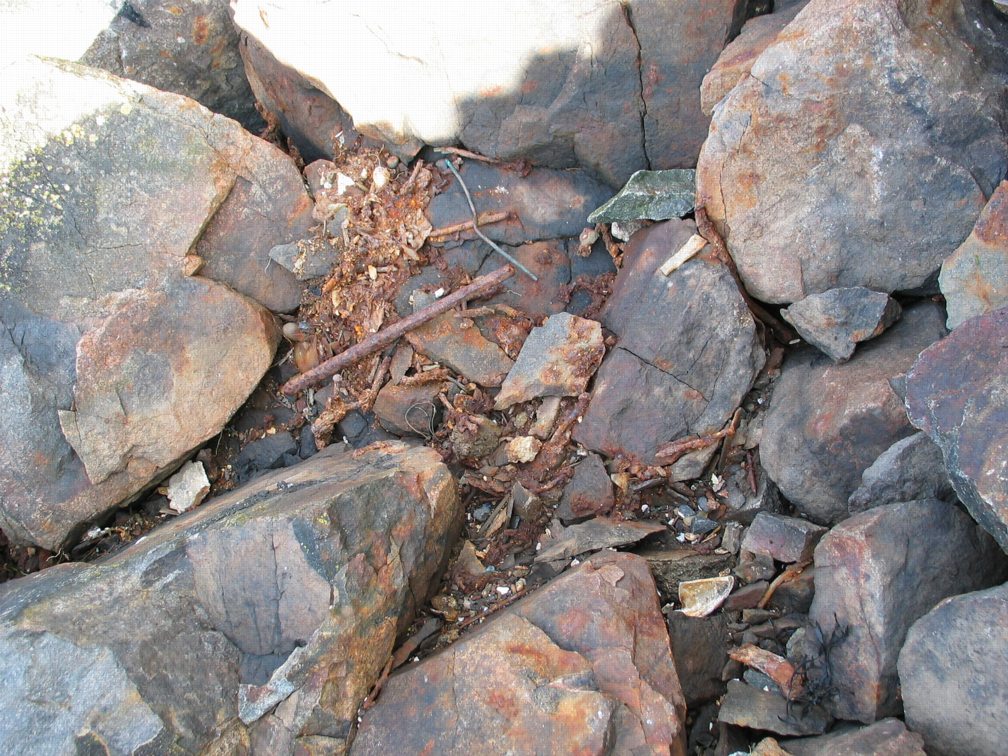 |
| The storms in the winter of 2006 dispersed the parts of the boiler | These pieces which are now small enough to move will be transferred to the collecting area. | The other end of the boiler. This was carried up to shore on February 12, 2007 by members of the racerocks.com activity.See below. | The hurricane in December 2006 moved rocks exposing more rubble below the energy building. |
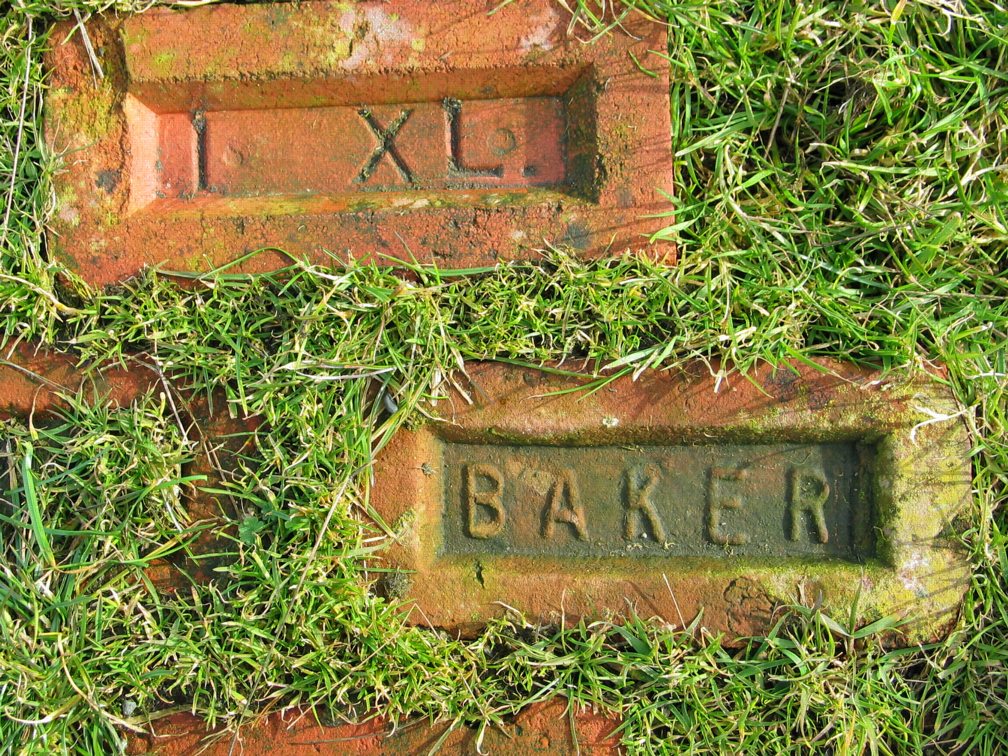 |
|||
| Link to the file on bricks of Race Rocks |
The last of the rusted parts of the old boiler from the engine room shown above are carried up by Pearson College students in the Race Rocks Activity in 2007 to be part of the collection of other old parts stored at the base of the tower.
The Tidal Current Energy Project at Race Rocks
This video is a compressed version of the one produced by Brainstorm for the Tidal Current Power Project. It documents the partners and the process along the way in the establishment of the Turbine Project . (released January 19, 2007 to correspond with the visit of Prime Minister Stephen Harper to Lester Pearson College and Race Rocks.)
Wind at Race Rocks
This video was taken with the remote camera 5 on Dec 11, 2006, a day which can be represented by the images of the atmospheric factors below. Note the wind speed was over 40 knots in the afternoon. The extreme pressure drop on the barometric graph was a good indicator that a big wind was coming.
It certainly can be seen as a wild mixture of weather for the day.
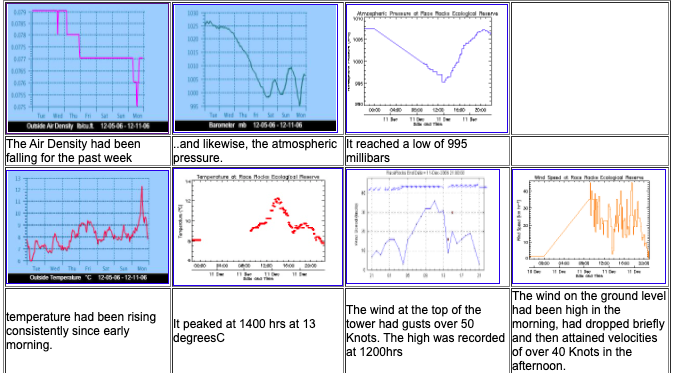
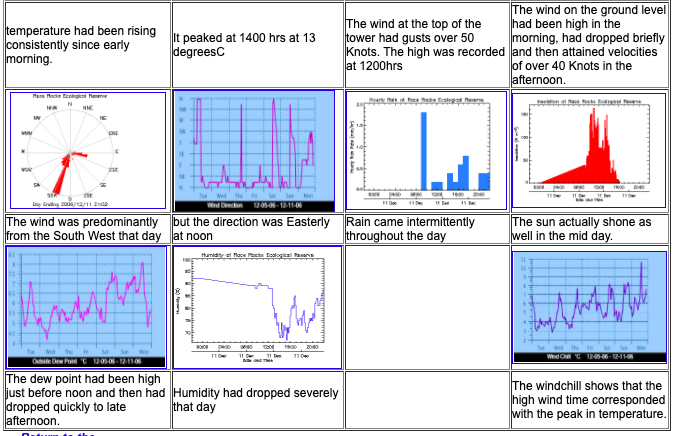
- The docks at the peak of the storm
- photos by Mike and Carol Slater
Distaplia smithi
This video was taken in the lab:
A general view of the habitat of this ascidian in the high current area near the tidal current turbine.
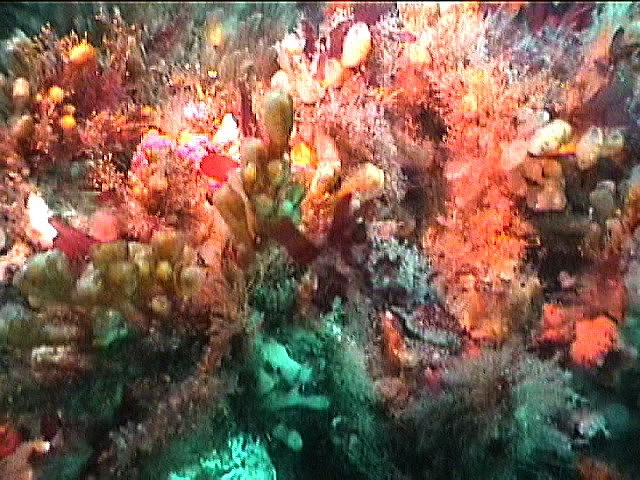
A general view of the habitat of this ascidian in the high current area near the tidal current turbine.
Domain Eukarya
Kingdom Animalia
Sub-Phylum Urochordata
Class Ascidiacea
Order Enterogona
sub order Aplousobranchia
Family Claveliidae
Genus Distaplia
Species smithi
Common Name:Club Tunicate
II took this picture the first time I encountered this ascidian when diving at Race Rocks. I had no idea what kind of organism it was at the time .. I referred to it as a grape ascidian .. GF
| Other Members of the subphylum Urochordata at Race Rocks |
and Image File |
 The Race Rocks taxonomy is a collaborative venture originally started with the Biology and Environmental Systems students of Lester Pearson College UWC. It now also has contributions added by Faculty, Staff, Volunteers and Observers on the remote control webcams. The Race Rocks taxonomy is a collaborative venture originally started with the Biology and Environmental Systems students of Lester Pearson College UWC. It now also has contributions added by Faculty, Staff, Volunteers and Observers on the remote control webcams.
October 2006- Garry Fletcher |
Phalacrocorax penicilatu: Brandt’s Cormorant–The Race Rocks Taxonomy
This cormorant is numerous in the winter, with much of the British Columbia population present at that time, as it is a relatively rare bird. In 1987 a survey that reported 3 nests was done on 15 July by Wayne Campbell and was reported in: Campbell, R.W., and Preston, M. 1988. British Columbia nest records scheme. Thirty-first and thirty-second annual report 1986-1987. British Columbia Naturalist 26:12-13.
- Brandt’s cormorants, Dec 26, 2005..approx 1000 counted in the Christmas bird count .
- photos by David Allinson
- This picture was taken with the remote camera 5 on Feb2, 2006. Note the white whisks of feathers behind the ears on the males. This is seen only in the winter season. (GFphoto)
Here are the links to the Christmas Bird Counts.
In 2014 and for several years previous, there have been no cormorants nesting at Race Rocks. The only still-thriving colonies are at Mandarte Island.
This is a Blue-listed species in BC. This list includes species not immediately threatened, but of concern because of characteristics that make them particularly sensitive to human activities or natural events.
Domain: Eukarya
Kingdom: Animalia
Phylum: Chordata
Sub-Phylum: Vertebrata
Class: Aves
Order: Pelcaniformes
Family: Phalacrocoracidae
Genus: Phalacrocorax
Species: penicilatu
Common Name: Brandt’s cormorant
other Brandt’s Cormorant posts at Race Rocks
 The Race Rocks taxonomy is a collaborative venture originally started with the Biology and Environmental Systems students of Lester Pearson College UWC. It now also has contributions added by Faculty, Staff, Volunteers and Observers on the remote control webcams. —–Garry Fletcher The Race Rocks taxonomy is a collaborative venture originally started with the Biology and Environmental Systems students of Lester Pearson College UWC. It now also has contributions added by Faculty, Staff, Volunteers and Observers on the remote control webcams. —–Garry Fletcher |
